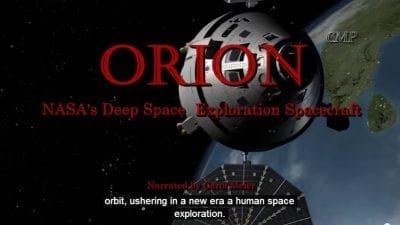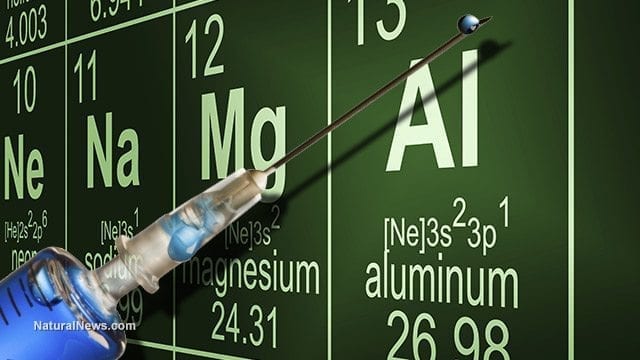On Friday, December 5, 2014 NASA launched the Orion Spacecraft into the heavens and proclaimed to the world that it had officially set its cross hairs on the planet Mars. People watching the live telecast on the mainstream media networks might have thought the spacecraft was actually heading to Mars on December 5. The caption printed on the television screen read, “Mission to Mars” as the large and impressive looking rocket was visible in the background.
The truth be told, Orion was not going anywhere close to Mars. It was launched into the sky without any humans on-board and then entered a relatively low earth orbit (LEO) before splashing down safely 600 miles off the coast of Baja, California just four and a half hours after launch. According to the space agency, Orion was loaded with sensitive instrumentation that was recording information about radiation impacting the inside of the space capsule. The same space capsule where live astronauts would be potentially situated in future flights.
NASA Orion Program manager Mark Geyer said:
“A human rated system hasn’t gone that far since 1972. And in fact that mission was Apollo 17 which launched December 7th – you know here we are again, the United States leading exploration.”
Orion rode to space from Cape Canaveral Air Force Station on a Delta IV heavy rocket with no crew, but loaded with about 1,200 sensors. The flight test basically was a compilation of the riskiest events that will happen when astronauts fly on Orion on deep space missions. These include radiation, which Orion encountered as it passed through Earth’s Van Allen belts. – NASA.gov
When Bart Sibrel asked NASA to provide him, as a Journalist, with the Radiation Readings from the Geiger Counters onboard the Orion spacecraft, he was informed by NASA that this information was “Classified”. The question is, if the temperature of the sun, or the amount of helium in Jupiter’s atmosphere, is not classified, why would the Amount of Radiation in the Radiation Belts surrounding Earth be classified? After all, these readings are merely a part of nature, and taxpayer funds were used to acquire this scientific data, so why not share this information with the public and scientists?
The reason for keeping these Radiation Readings a secret, is the fact that if NASA shared them, it would prove the Radiation Belts to be too severe for humans to survive passing through them on a trip to the moon. The public might then ask: How then did the Apollo crews survive passing through this admitted “Dangerous Radiation” nearly 50 Years Earlier when they just acknowledged that the technology to do so has YET TO BE INVENTED?
The US Space Agency faces an impossible task in launching live astronauts to Mars or any other celestial body that exists in our universe. In order to deliver astronauts to Mars, a rocket must pass through the Van Allen Belts. The Van Allen belts were the first discovery of the space age, measured with the launch of a US satellite, Explorer 1, in 1958. In the decades since, scientists have learned that the size of the two belts can change – or merge, or even separate into three belts occasionally. But generally the inner belt stretches from 370 to 6,000 miles above Earth’s surface and the outer belt stretches from 8,400 to 36,000 miles above Earth’s surface.
No human beings could possibly survive passage through the Van Allen Belts. It is an impossible journey and NASA is well aware of the dangers its astronauts would face should they be foolish enough to place a space capsule in an orbit that is anything other than a low earth orbit.
Bill Gerstenmaier, NASA Assoc. Administrator for Human Exploration and Operations, on the Orion mission to the Van Allen radiation belt:
“The first look looks really good from a data standpoint, but we’ll dig through all of the data and make sure that everything is there. We’ll definitely learn some things from this flight – that’s why it was a test flight – it will really help us as we take those next steps into the solar system with humans.” – NASA.gov
This is the same space agency that claims it sent Apollo astronauts to the moon in the late 1960’s and early 1970’s. How did NASA manage to get its Apollo space ships and astronauts through the Van Allen Belts 45 years ago with aluminum and steel constructed space capsules? The inferior technology and space suits used in the Apollo program would have never protected human life passing through the intense radiation belts that completely surround earth. I would challenge any NASA officials suggesting that the Apollo Astronauts were well protected during their journeys to the moon to wear one of the Apollo space garments, and then tour the insides of the Nuclear reactors at Chernobyl or Fukushima, Japan. Good luck with that challenge.
The Space Shuttle program that was brought to fruition by NASA in the 1970’s was designed exclusively to study and defeat the Van Allen Belts and the problems they produced for manned space missions. Guess what happened? Absolutely nothing! Since the last Apollo mission to the moon in 1972, no human beings from any countries have attempted to tangle with the earth’s radioactive barriers that extend well into the heavens.
The moon is probably the most strategic piece of real estate in the entire universe to occupy as far as keeping a close watch on earth. From a military perspective, it would be the best place to watch our planet and any enemies of the United States of America. There are, undoubtedly, military people champing at the bit to get territorial rights to our lunar satellite. Why wouldn’t NASA want to revisit the moon? The answer is simple! In order to get to the moon, humans have to pass through the Van Allen Belts. NASA couldn’t do this in 1969 and they cannot do it in 2014.
In the video presentation below, NASA engineer Kelly Smith explains about many of the risks and pitfalls surrounding the new Orion Deep Space Mission to the planet Mars. Surprisingly, chief among Kelly’s concerns is whether or not his spacecraft can successfully pass through the perilous Van Allen Radiation Belts. Such is the prospective danger in fact, that NASA will have to send a dumbie craft first in order to ‘test out’ what the potential radiation effects will be on future human crews, as well as on the ship’s delicate sensors and equipment.
Hold on. Why the guessing game by NASA? Why don’t they just use the same 1969 technology they are said to have used on the first Apollo moon missions?
This is the ultimate conspiracy, as it brings together two huge issues – the viability of the Apollo Moon Landings, as well as dreams of a human colony on Mars. This latest admission by NASA places both of these in jeopardy.
NASA’s young Kelly Smith, accidentally admits, on camera, that the technology DOES NOT YET EXIST to protect crews from the “Dangerous Radiation” of the Van Allen Radiation Belts. After this admission, when Sibrel asked to interview him about these remarks, NASA said that Kelly Smith, though once Orion’s Spokesman, was no longer available for comment to Journalists.
At 2:48 into the video, Smith begins his admission by saying that the Van Allen Radiation Belts being entered by the Unmanned Orion spacecraft are 15 times farther away from Earth than the space station (yet only 1/66th of the distance to the moon) and therein contain “Dangerous Radiation”. The Apollo crews, nearly 50 Years Ago, are the only ones in world history to have Claimed to have gone though this Dangerous Radiation.
At 3:33 Smith admits, “We (NASA) must SOLVE these (radiation) challenges BEFORE we send people through THIS REGION OF SPACE”, which they would have to do to reach the Moon.
This is an Absolutely Amazing and Unprecedented Admission by NASA. They just acknowledged that the technology DOES NOT YET EXIST to send manned crews through the Van Allen Radiation Belts, which you would have to go through to reach the moon!
Sources:



